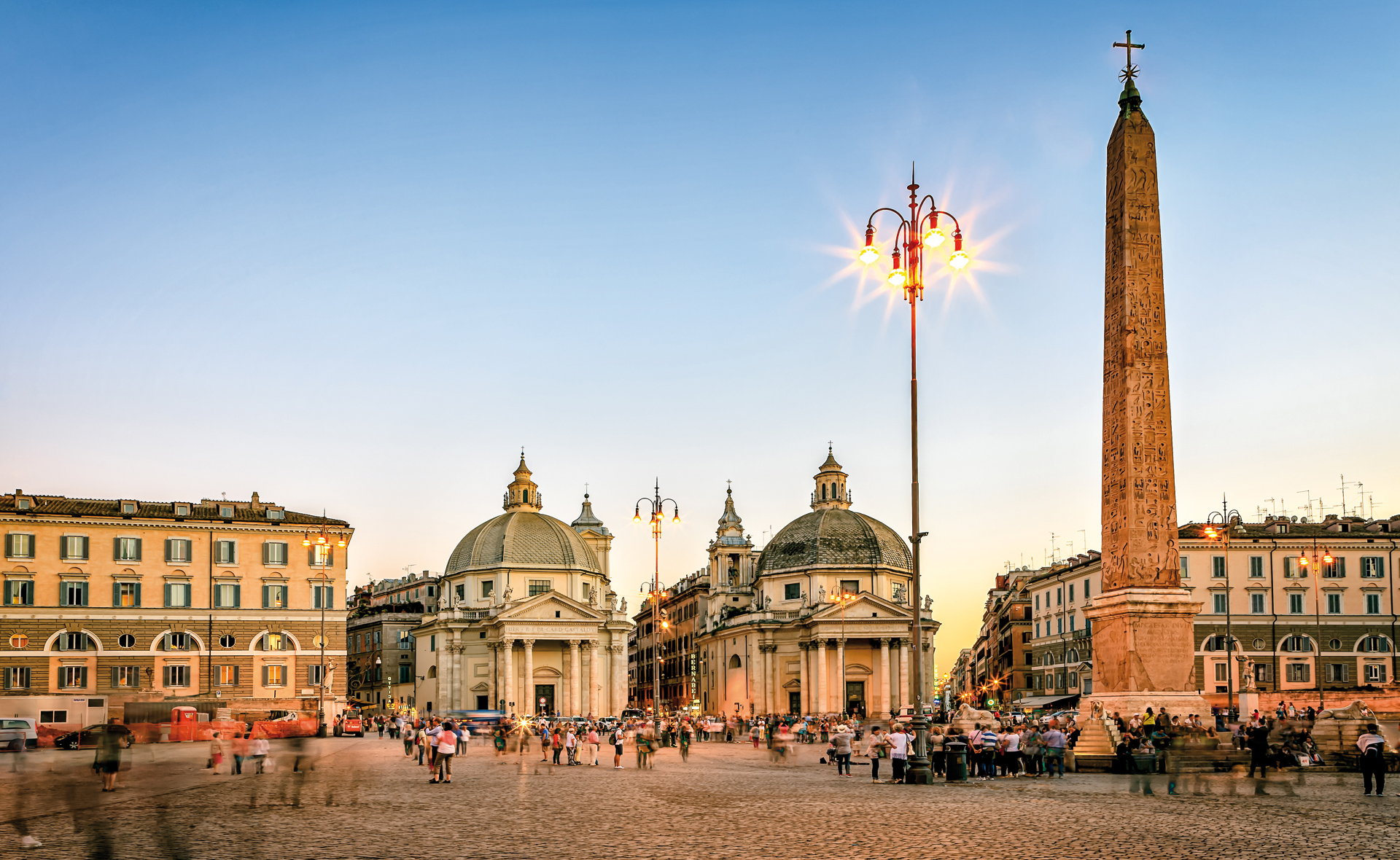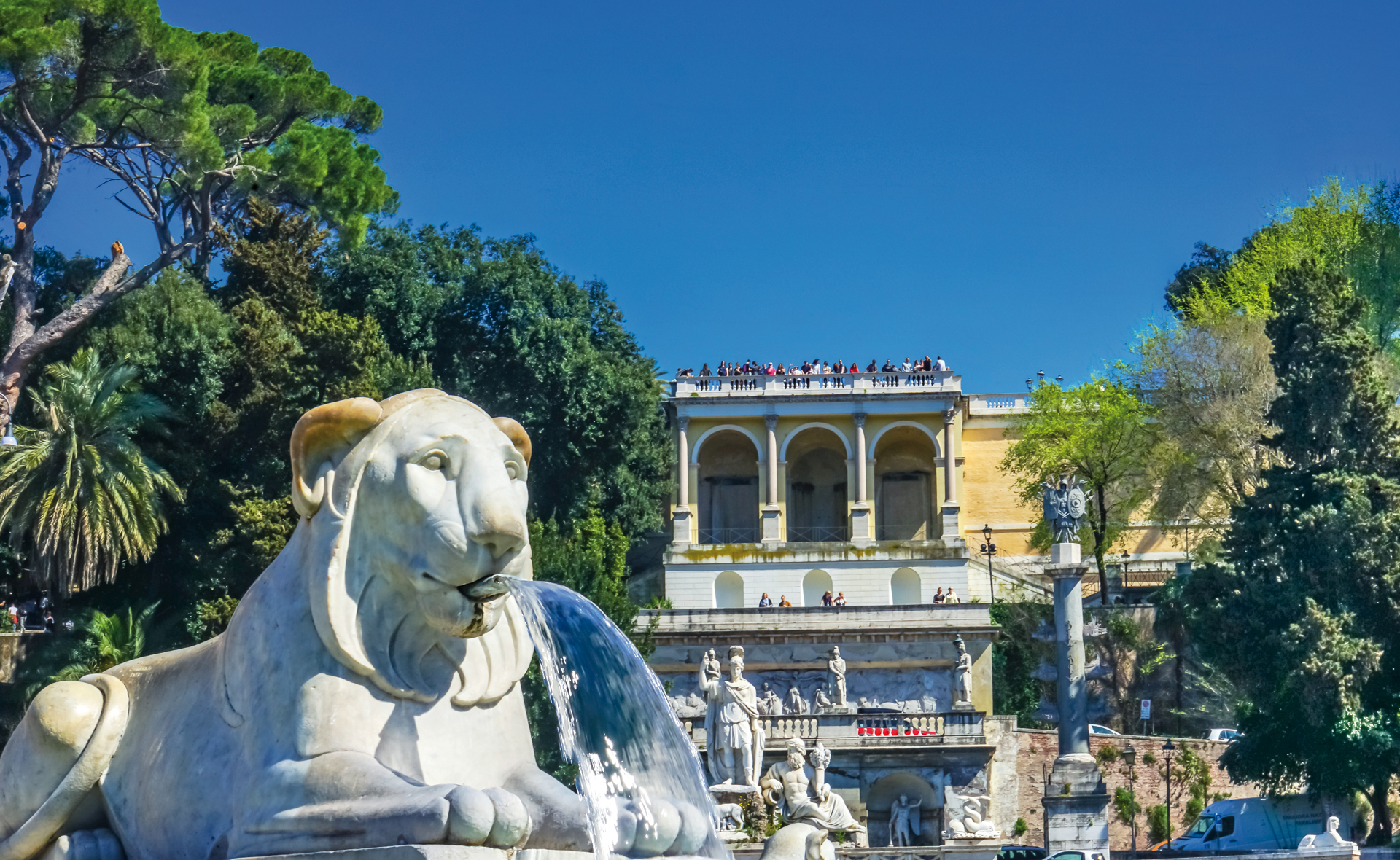Rich in art and culture, Piazza del Popolo is the gateway to the centre of Rome.

Entering from the imposing Porta del Popolo, one is immediately catapulted into the splendid Piazza del Popolo. Reworked several times over the centuries, the arch’s external façade was built by architect Nanni di Baccio Bigio, who was commissioned by Pope Pius IV to restructure it according to a design by Michelangelo.
The internal façade, on the other hand, resembles a triumphal arch. It was restored by Gian Lorenzo Bernini on the occasion of a visit by Queen Christina of Sweden in 1655.
The Church of Santa Maria del Popolo
Adjacent to the arch stands the majestic Church of Santa Maria del Popolo, rich in history and filled with priceless masterpieces. This sacred monument acquired its current aspect after the radical reconstruction work commissioned by Pope Sixtus IV della Rovere.
Structured in three naves, the church has four chapels on each side, ending in a large transept overlooked by four additional chapels. Not to be missed are the Cerasi Chapel, which houses Caravaggio’s “Crucifixion of St. Peter” and “Conversion of St. Paul”, as well as the “Assumption of the Virgin” by Annibale Carracci; the Chigi Chapel, designed by Raffaello Sanzio for the banker Agostino Chigi between 1513 and 1514, and subsequently restored by Bernini, which houses the beautiful altarpiece of the “Nativity of the Virgin”, painted on slate by Sebastiano del Piombo and completed by Francesco Salviati; finally, the Theodoli Chapel, which is entirely decorated in refined stucco and frescoes by Giulio Mazzoni.
The twin churches
The twin churches of Santa Maria in Montesanto and Santa Maria dei Miracoli stand out solemnly at the beginning of Via del Corso, begun by architect Carlo Rainaldi on the will of Pope Alexander VII and completed by Gian Lorenzo Bernini and Carlo Fontana in the ’70s of the seventeenth century. But don’t be deceived!
Although they may seem almost identical from the outside due to an optical effect, in reality there are some subtle differences. Due to the two differently shaped plots, architect Rainaldi had to resort to two diverse solutions, endowing Santa Maria in Montesanto with an elliptical footprint and a dodecagonal dome, and Santa Maria dei Miracoli with a circular shape and an octagonal dome.

Egyptian obelisk and the Fontana dei Leoni
The 34-metre Flaminio Obelisk is the square’s most famous landmark. Built in 1589 by Pope Sixtus V, it is the second oldest obelisk in Rome. The square’s new urban layout was the work of architect Giuseppe Valadier (1762 -1839). Besides designing the Fontana dei Leoni at the base of the obelisk to replace Giacomo Della Porta’s late sixteenth-century fountain, Valadier also designed two opposing hemicycles on the sides of the square decorated with Egyptian sphinxes, each housing a fountain: the Fontana della Dea Roma (Fountain of the Goddess Rome), which stands between the Tiber and Aniene rivers, and the Fontana di Nettuno (Fountain of Neptune), featuring tritons and dolphins, constructed by Giovanni Ceccarini according to a design by Valadier.
